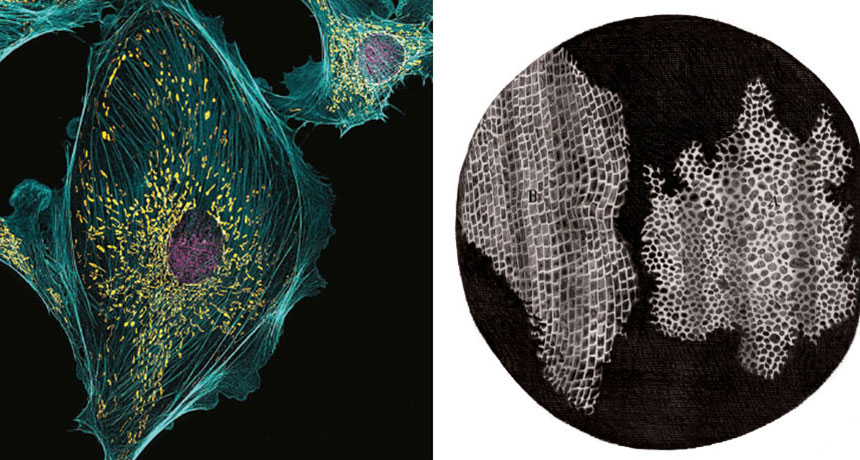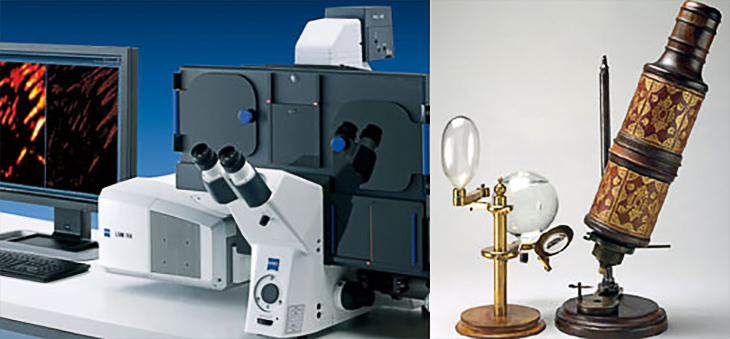Microscopes have come a long way since 1665
Scopes deliver stunning cell images 350 years after Robert Hooke’s Micrographia

CENTURIES OF PROGRESS A Robert Hooke drawing from his 1665 book Micrographia (right) depicts little boxes in a slice of cork that he called cells. Today microscopes provide extraordinary views of cells, like these (left) from a cow.
Robert Markus; The Royal Society







